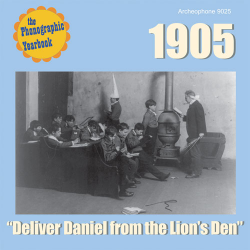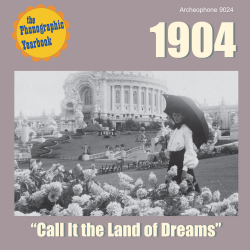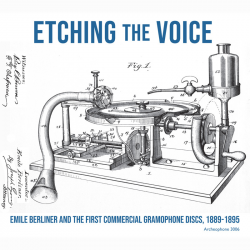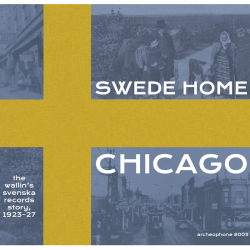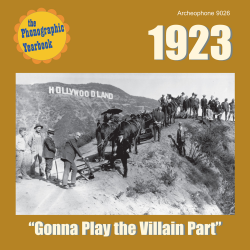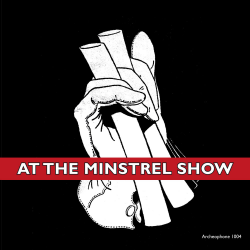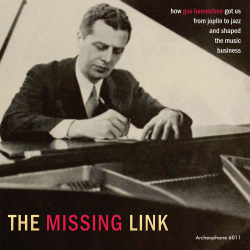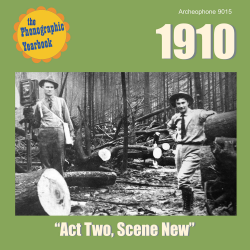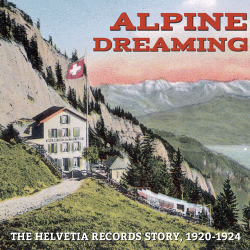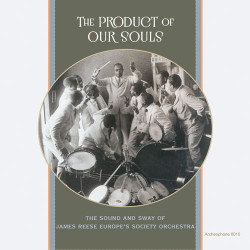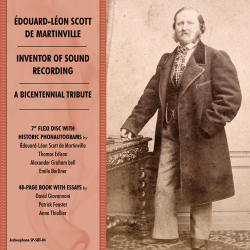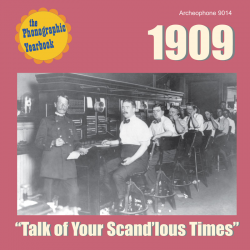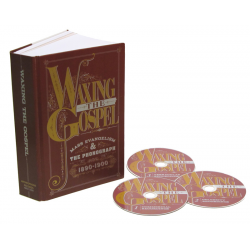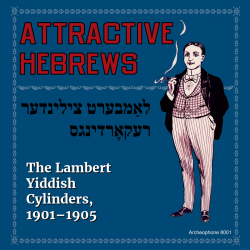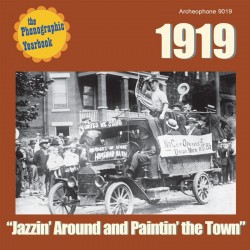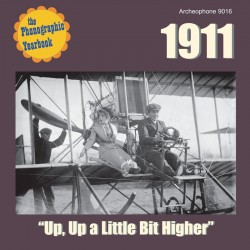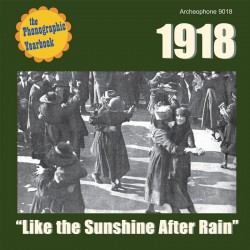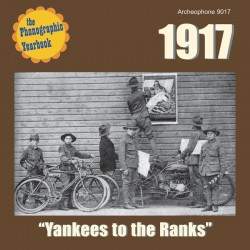Compilation There are 44 products.
1905: "Deliver Daniel From the Lion's Den"
1905: “Deliver Daniel From the Lion’s Den” features 27 popular recordings from 1905, the year Einstein seemingly emerged from nowhere to publish four works that made his reputation and permanently changed our understanding of light, mass, and energy. Highlights include Arthur Collins’ “Preacher and the Bear,” Bob Roberts’ “Back Back to Baltimore,” and two...
$17.49In Stock1904: "Call It the Land of Dreams" (Various Artists)
1904: “Call It the Land of Dreams” presents 27 popular recordings from the year the St. Louis Exposition introduced the world to ice cream cones and America took lead on the Panama Canal. Highlights include “Meet Me in St. Louis, Louis,” “Under the Anheuser Bush,” and “Toyland.”
$17.49In StockEtching the Voice: Emile Berliner and the First Commercial Gramophone Discs, 1889-1895 (Various Artists)
2021 Grammy Nominee: Best Historical Album & Best Album Notes These recordings were made between 1889 and 1895 at the launch of Emile Berliner's disc gramophone in Europe. They are the first and scarcest manufactured sound recordings in the world--the archetypes of the 78, the 45, the EP, and the LP. Gathered together, all surviving discs could be...
$32.99In StockSwede Home Chicago: The Wallin’s Svenska Records Story, 1923-1927 (Various Artists)
Chicago, the most populous Swedish city after Stockholm, was also home to the first record label founded by a Nordic immigrant to the United States. Gustaf Waldemar Wallin, a former crofter from Sweden’s rocky western coast, owned a music shop and launched Wallin’s Svenska Records, issuing 28 ten-inch shellac discs (56 tracks) from 1923 to 1927....
$28.99In Stock1923: "Gonna Play the Villain Part"
The newest volume in our Phonographic Yearbook series. 1923: “Gonna Play the Villain Part” features 25 selections from the year a popular president died amid growing public scandals, a new sign illuminated the Los Angeles skyline, and the country was swept up musically by the question of where one could find bananas.
$17.49In StockAt the Minstrel Show (Various Artists)
For all the vexed issues they pose to us now, minstrel shows were an important part of American social life in the 19th and early 20th centuries. In the early days of the phonograph industry, the record labels attempted to bring the experience of minstrelsy into consumers’ homes. The records were popular; hundreds of titles and thousands of examples...
$28.99In StockThe Missing Link (Various Artists)
Under the pseudonym “Carl Fenton,” Gus Haenschen led some of the tightest orchestra recordings of the 1920s—but he also oversaw the musical direction at the Brunswick label, where he signed Isham Jones, Al Jolson, Nick Lucas, Abe Lyman, the Happiness Boys, and even Charlie Chaplin. Haenschen probably would not have gotten that job had it not been for his...
$16.99In Stock1910: "Act Two, Scene New"
1910: “Act Two, Scene New” features 26 selections from the year wildfires in the west shaped environmental policy.
$17.49In StockAlpine Dreaming: The Helvetia Records Story, 1920-1924 (Various Artists)
In 1920 Ferdinand Ingold, a poor but visionary Swiss settler in the small Wisconsin town of Monroe, audaciously launched a record label, Helvetia—invoking his homeland’s ancient name and celebrating its musical heritage. Praised in the immigrant press yet beset by fiscal challenges, Helvetia issued a scant 36 sides. Scattered, scarce, and nearly...
$27.99In StockThe Product of Our Souls: The Sound and Sway of James Reese Europe’s Society Orchestra
America was hot to trot in 1913, when a craze for social dancing swept across the nation. Vernon and Irene Castle were the faces of that cultural revolu-tion— and the soundtrack was composed by James Reese Europe and played by his bands. An esteemed musician, bandleader, and labor organizer on behalf of his fellow African Americans, Europe described his...
$17.99In StockÉdouard-Léon Scott de Martinville, Inventor of Sound Recording: A Bicentennial Tribute
Edouard-Léon Scott de Martinville (1817–1879) invented sound recording twenty years before Thomas Edison re-invented it. But his phonautograph is only one of his many accomplishments. Here, at the bicentennial of his birth, his story is published in depth. This extensively illustrated 48-page softcover book presents new research on Scott and his role as...
$22.00In Stock1909: "Talk of Your Scand'lous Times" (Various Artists)
Our upcoming release features a whopping 28 selections from 1909, the year Theodore Roosevelt handed the presidential reins to William Howard Taft. 1909: "Talk of Your Scand'lous Times" includes a 24-page full-color booklet with notes and illustrations that bring the year to life.
$17.49In StockWaxing the Gospel: Mass Evangelism and the Phonograph, 1890-1900 (Various Artists)
Before the 20th century, the “sacred” songs of Protestant camp meetings and revivals were as catchy, memorable and personal as the pop songs of that or any other time. Bringing you more recordings from the 1890s than any other historical album to date, Waxing the Gospel is a landmark collection of 102 tracks on three CDs in a 408-page beautifully...
$55.00In StockAttractive Hebrews (Various Artists)
Recordings of arias from long-forgotten Yiddish operas, street-corner ballads, cantorial hymns, and odd traditional folk songs—these lost prizes of Jewish Old World history landed sideways into a 1903 Lambert Company catalog under the description, "Attractive Hebrew Selections." The records are like an ethnographer’s dream, but listen closely and you will...
$17.99In Stock1919: "Jazzin' Around and Paintin' the Town" (Various Artists)
25 selections from 1919, the year the White Sox threw the World Series and the nation experienced one of the largest labor strikes in history. Highlights include Marion Harris' "After You've Gone," John Steel's "A Pretty Girl is Like a Melody," Billy Murray's "The Alcoholic Blues" and hits by some of the leading dance orchestras of the day. The set...
$17.49In Stock1911: "Up, Up a Little Bit Higher" (Various Artists)
26 hits from 1911, the year the nation got wrapped up in the aviation craze and the Triangle fire changed workplace safety laws. Highlights include Gene Greene's "King of the Bungaloos," Blanche Ring's "Come Josephine in My Flying Machine," and Collins and Harlan's "Alexander's Ragtime Band. The set includes a 24-page full-color booklet with an...
$17.49In Stock1918: "Like the Sunshine After Rain" (Various Artists)
1918: "Like the Sunshine After Rain" features 24 selections from the year World War I came to a close and an influenza epidemic swept the nation. Selections include wartime and comic songs, songs that would become part of the Great American Songbook, and early jazz and dance numbers by Joseph C. Smith's Orchestra and the Original Dixieland Jazz Band. The...
$17.49In Stock1917: "Yankees to the Ranks" (Various Artists)
1917: "Yankees to the Ranks" presents 25 songs from the year the U.S. declared war on Germany and entered into World War I. The 24-page color booklet includes extensive notes on all the songs and an interpretive historical essay that tells the story of patriotic volunteerism. Old favorite artists such as Billy Murray, Campbell and Burr, and Collins and...
$25.00In Stock
